
How had the powerful Adolf Eichmann, a major figure in one of the most frightening empires the world has ever known, come to live in a shack in Argentina?
In February 1945, Argentina’s Vice President and Secretary of War, Juan Perón, brought together the leading lights of the country’s influential German community, most of them fervent supporters of the Third Reich. Perón, a Machiavellian opportunist, announced to the group that since it looked likely that the Axis would lose to the Allies, Argentina was ending its neutrality and declaring war on Germany.
“It’s a mere formality,” he explained, done to save the country from punishment from the Allies when the fighting ended. He promised not to abandon his German friends. He wanted Nazi scientists and engineers to come to Argentina to benefit its military research and industrialization. He also felt it was his duty to help anyone who immigrated from Germany to build a new life — no matter what he or she had done during the war.
The Argentine secret service then established an escape network with bases throughout Europe. The network’s agents financed operations, bribed local officials, and orchestrated safe houses and transportation. Between the immigration office in Argentina and the various Argentine consulates in Europe, they produced all the necessary paperwork for Nazis to flee the continent.
Argentina was not alone in providing sanctuary for former Nazis. Postwar Europe was full of people on the run. Fake passports, forged identification papers, and willing smugglers were all easy to find. The Allies also smuggled out a number of war criminals, among them former SS officers, who were then recruited for intelligence activities against the Soviet Union and its satellites. In fact, the United States used some of the same routes and safe houses to smuggle people out of Europe as Argentina did.
Adolf Eichmann had spent time in prisoner-of-war camps at the end of the war, but he escaped and disappeared before the authorities realized his true identity. He went into hiding for three years in the forests of Germany, working as a lumberjack and then a chicken farmer. In 1948, he decided it was safe to make an attempt to leave the country. The British had ended their efforts to try war criminals, and the Americans were now preoccupied with the Russians.
He contacted “Günther,” an underground agent on the Argentine network, through coded newspaper advertisements, and paid three hundred marks, one-fifth of his savings, for his help. Günther gave him his instructions, and Eichmann traveled by train to Munich, nervous that he might be exposed at any moment.
Munich was swarming with border police on the lookout for fugitives. Eichmann trembled as he filled out a hotel registration form, signing it “Otto Heninger.” After a week of anxious waiting, a local hunter made contact with him and guided him across the border into Austria.
There he had two contacts. The first, a former SS lieutenant, sent him packing, huffing, “They really send every damn tramp this way.” The second brought him to an inn near the Brenner Pass in the Alps between Austria and Italy. French soldiers were active in the area, so Eichmann had to be hidden in the inn’s attic. Several days later, the innkeeper judged it was safe to leave and took him along the edge of the pass. Eichmann was not allowed to bring his suitcase; the innkeeper was afraid it would arouse suspicions if they came across a patrol. A mile over the border into Italy, a priest in black robes on a bicycle met the two men on the road. The priest had Eichmann’s suitcase with him.
The innkeeper returned to Austria, and the priest arranged for a car to take Eichmann and himself to Merano, a Tyrolean village in northern Italy. Eichmann spent the night at a castle, a safe house for fleeing Nazis. The next day, he received a new identity card, issued by the town hall of a neighboring village, Termeno. His new name would be Ricardo Klement. The underground agent who brought the ID also had a landing permit for his final destination: Buenos Aires.
On May 31, 1950, Eichmann left Merano for the city of Genoa, arriving at nightfall. The following day, he presented himself at the local headquarters of the International Committee of the Red Cross. He handed the official his landing permit and ID, along with a letter of reference that stated that Ricardo Klement was a refugee from the war and could not obtain a travel document from any other source. The official approved Eichmann’s application for a Red Cross passport without question. He took his fingerprints and photograph, attached one copy to the cardboard passport, and marked it with a Red Cross stamp dated June 1, 1950. An elated Eichmann walked out of the office feeling like a real person again.

Eichmann’s Red Cross passport.
On July 17, Eichmann made his way down to the port of Genoa. Carrying his suitcase and wearing a new suit, a bow tie, and a black hat, for all the world he looked like a traveling salesman. He boarded the passenger ship Giovanna C and deposited his bag in his third-class berth. Then he went to the upper deck to watch the departure. As the ship steamed out of the harbor, Eichmann felt a rush not only of relief but also of triumph. The chance of discovery by the Allies would be next to nothing in Argentina, especially if he was careful.
Eichmann had 485 pesos in his pocket when he arrived in Buenos Aires, the equivalent of $35 ($850 in today’s money). With limited funds and no work papers, he might have fallen on hard times if not for the assistance of the German Argentine network. Carlos Fuldner, the operator of the Argentine ratline, shepherded Eichmann into his new life, finding him an apartment and introducing him to other escapees. He secured Eichmann a job in a metal shop and facilitated the approval of his Argentine ID card by the Buenos Aires police. By October 1950, with these papers in hand, Eichmann was now wholly and completely Ricardo Klement, a permanent resident of Argentina and legally able to work.
Two years later, when Eichmann requested that his wife and three sons join him, the network helped him again, secretly contacting Vera on his behalf. Eichmann first wrote to her at Christmas 1950, saying that “the uncle of your children, whom everybody presumed dead, is alive and well — Ricardo Klement.” Later he sent her money and instructions for travel.
When Vera and the boys arrived in Buenos Aires on July 28, 1952, Eichmann had them met at the port and brought to a nondescript hotel — a precaution in case they had been followed. When he appeared in the doorway, his wife cried with joy. Despite her delight, she couldn’t help but notice that her husband had aged dramatically. His stoop was more pronounced, his face looked drawn and gray, and his hair had thinned.
“I am your Uncle Ricardo,” Eichmann said to his sons. Klaus was now sixteen, Horst twelve, and Dieter ten. Thinking that their father had been dead for years, the two younger sons did not question him. But Klaus knew that this man was his father. Eichmann gave them one hundred pesos each, and the boys ran off to explore. The two youngest bought ice cream and candy, and Klaus, taking after his father, bought his first pack of cigarettes.
Once Eichmann and Vera were alone, she brought out the pile of newspaper clippings she had collected about the terrible crimes he had committed. She wanted an explanation. Eichmann became enraged. “Veronika,” he said, “I have not done a single Jew to death, nor given a single order to kill a Jew.”
She never asked him about the past again.
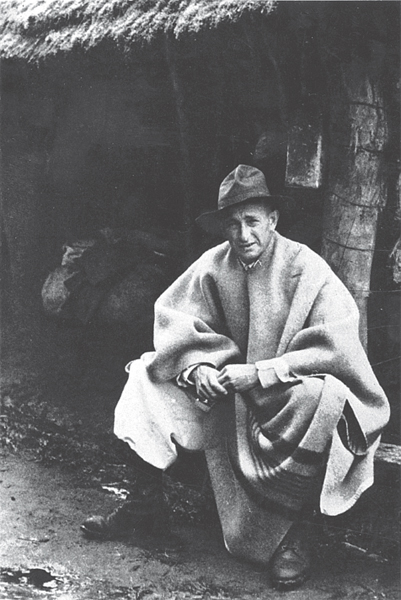
Eichmann in Argentina.

Eight years after the Eichmann family settled in Argentina, Adolf Eichmann’s past caught up with him.
Back in Tel Aviv, Isser Harel briefed Rafi Eitan, the Shin Bet Chief of Operations, on recent developments in the search for Eichmann and on Aharoni’s work of the previous three weeks. “I’m putting you in as the commander,” Harel informed him. “A. Take the most suitable men for the job, since you know what it will take to do it. B. Volunteers only. Ask each man if he is ready to volunteer. I don’t know how this will end, and if they are caught, theoretically they could even end up with a life sentence in an Argentine jail.”
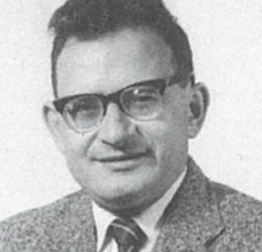
Rafi Eitan, Shin Bet Chief of Operations.
There was never a more unlikely looking individual for the role of mission leader than Rafi Eitan, who was extremely short-sighted and wore Coke-bottle glasses that made his eyes seem to bulge out from his face. He was only slightly taller than Harel, with the barrel chest and muscular arms of a farmer. But he spoke with confidence about his ability to find and lead the right men for the job. “None of them will hesitate,” Eitan said quietly.
On April 10, Avraham Shalom was summoned to meet with Harel. Thirty-three years old, Shalom had the stout body of a wrestler and the kind of common, indistinctive face people usually forgot once he left the room. He was originally from Vienna, and when he was nine, he had been beaten so badly by thirty of his Austrian classmates — some of whom he thought were his closest friends — that he had to stay in bed for two weeks to recover.
They had beaten him because he was Jewish. His teachers had watched.
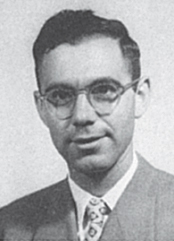
Avraham Shalom, Deputy Head of Operations for Shin Bet.
Now he was the Deputy of Shin Bet Operations, and he had just returned to Israel from an intense undercover mission when Harel called. Shalom went directly to Mossad headquarters in Sarona, where Harel sat him down and asked, “How would you feel walking around in a foreign country with a false passport?”
It was a strange question, considering that Harel knew Shalom rarely left Israel with anything other than a false passport.
“I’d feel fine,” Shalom said.
“Fine? You can do that?”
For some reason, Shalom thought, Harel was reluctant to give him his new orders.
“Yes, of course,” he replied.
“We’re going after Eichmann,” said Harel, “and maybe this time we’ll get him.”
“Give me some details.”
“Aharoni has them. Go see him and ask what he found. Then find Rafi. We have to assemble a team.”
Shalom went to the Shin Bet offices, in a dilapidated building by the clock tower in Jaffa, to meet Rafi Eitan and draw up a list of people for their operation team.
The first choice was obvious: Shalom Dani, the forger. Dani had escaped from a Nazi concentration camp by making a pass out of toilet paper. They would need his remarkable skills for all the identification documents required. Second was Moshe Tabor. Tabor was not only a strongman — he stood at 6 feet 2, and his hands were the size of baseball mitts — but also a technical master who could create suitcases with false bottoms, overhaul a car engine, fix a submachine gun, pick any lock, and build a safe room that would never, ever, be found.
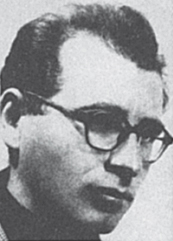
Shalom Dani, forger.
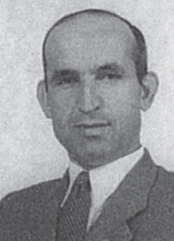
Moshe Tabor, Mossad agent.
Harel wanted Zvi Aharoni on the team. His knowledge of the area would be useful, as would his skills as an interrogator. They also agreed on Yaakov Gat, an experienced, cool-headed agent. Eitan pushed for Peter Malkin, another strongman, who had a fine operational mind and who was an expert in disguises. Ephraim Ilani had an encyclopedic knowledge of Buenos Aires and was fluent in Spanish. Dr. Yonah Elian, a civilian anesthesiologist, would keep Eichmann in good health and, if necessary, under sedation. He could also treat any injuries the team might suffer.
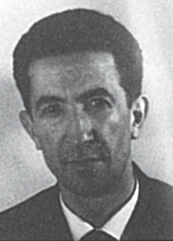
Yaakov Gat, Mossad agent.
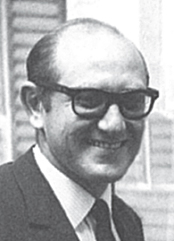
Peter Malkin, Shin Bet agent.
Finally, Yaakov Medad would be the front man — the one who arranged the cars, the safe houses, and anything that meant being in the public eye. He was well suited for the job. Medad took to accents easily, remembered background information to the letter, and was able to assume a range of identities and switch back and forth between them at a moment’s notice. Most significantly, he had the kind of unassuming, innocent looks that won a stranger’s trust in an instant.
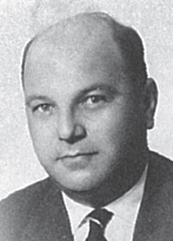
Yaakov Medad, Mossad agent.
It was a good team. Each member had almost a decade of experience in the Israeli intelligence services. They spoke a wide range of languages — key to keeping their cover. Apart from the doctor, they all knew one another extremely well and had worked together on numerous assignments. They understood one another’s strengths and weaknesses, could communicate without speaking, and, most important of all, had absolute trust in one another.
The Mossad staff began the complicated preparations. It was important that no agent could be tied to another or tracked back to Israel, so all of the agents needed to travel on separate flights, departing from different locations, with forged passports and an array of visas. The visas were a particular challenge, since the Argentine consulate in each country required character references and health documentation before they would issue permission for a foreigner to enter Argentina. Most of this documentation had to be forged. Mossad and Shin Bet staff were sent to Paris to undergo inoculations and medical examinations so that their stamped forms could then be altered and pasted into the forged passports. With all of these preparations, the Mossad headquarters became a veritable travel agency, and staff filled a book the size of a telephone directory with the matrix of identities, flights, and scheduled meeting points.
Any equipment that could not be bought in Argentina without raising suspicion had to be transported in advance using “diplomatic pouch” — a term for any marked container that had immunity from search or seizure because it was sent as part of a country’s diplomatic mission. Some of the items Eitan requested included handcuffs, hidden cameras, sedation drugs, miniature drills and woodworking tools, lock picks, field glasses, pocket flashlights, a forgery kit, and a makeup kit with false teeth and wigs. The sizable amount of money needed for the operation was also transported via pouch.
Harel sent Aharoni and Amos Manor, the Shin Bet Director, to Jerusalem to meet with Haim Cohen and Pinhas Rosen, the Israeli Minister of Justice. As the Israeli government’s two top lawyers, Cohen and Rosen gave their approval for the mission. It was clear that capturing Eichmann would violate Argentine sovereignty, as one country cannot arrest the citizens of another country without a formal extradition process. But that would be a minor diplomatic issue between the two countries. In their legal opinion, the abduction would not affect Israel’s right to prosecute Eichmann, because, they believed, Germany was never going to pursue extradition seriously, let alone hold a trial.
Early on the morning of April 16, the team gathered for the first time, at Shin Bet headquarters in Jaffa. Ephraim Ilani had made the trip from Argentina. Only Yaakov Gat and Dr. Elian were not present. The shades were drawn on the balcony that overlooked the harbor, and Moshe Tabor turned on the slide projector. Aharoni walked them through a comparison of the photographs of Eichmann in his thirties wearing his SS uniform and the shots he had obtained in Argentina.
“Run two of them together,” Peter Malkin asked.
Tabor arranged two slides in the projector and put the images up on the blank wall. If they were both Eichmann, Malkin was shocked at how haggard and aged the Nazi had become since the end of the war. “It’s not easy to tell, is it?”
“We can’t be one hundred percent sure until we’ve got him,” Eitan said.
“Once we’re sure,” Tabor said, his massive frame a dark silhouette at the back of the room, “why don’t we kill the bastard on the spot?”
“We all share that feeling, I’m sure,” Eitan said.
Tabor shook his head. He was Lithuanian, and his family had been killed during the Holocaust. He had seen the extermination camps at the end of the war. Revolted and enraged, he had joined a Jewish avenger group and had hunted down, interrogated, and executed numerous SS men. There was no question in any of the team members’ minds that he would gladly kill Eichmann himself if given the chance.
Over the next few hours, and during several follow-up meetings, the team ironed out the operational details. Ephraim Ilani briefed them on Argentine local customs — everything from traffic conditions, airport procedures, and styles of dress to how to rent a car or a house and how to behave at a café. Since only Ilani and Aharoni had been to Buenos Aires, and the team wanted to blend in as much as possible, this was key information.
Most of their time was spent planning how and where they would seize Eichmann. They settled on three possible methods. The first was snatching him while he was away from home. The second was a commando raid at night, taking him from his bed. The third involved grabbing him on the street near his house — a possibility given the desolate neighborhood. They’d make a final decision once they were on the ground in Buenos Aires.
Each night, Peter Malkin returned to his Tel Aviv apartment and read, then reread, the Eichmann file. Malkin had broad shoulders like a linebacker and a head like a bowling ball. His expressive, youthful face switched easily from a pensive scowl to almost clownish mirth. Now, though, the Shin Bet agent could only think of his older sister, Fruma, who had stayed behind in Poland in 1933 when the rest of her family emigrated to Palestine. She had died with her husband and three children in the Holocaust.
Malkin knew that because of his strength and speed, he would likely be the one who would actually grab Eichmann. For the first time in his thirty-three years, many of them spent in dangerous situations, he had a profound fear of failure. He focused his every waking moment on the mission ahead and spent hours crafting different disguises and practicing the exact moves needed to overpower his quarry.
With the capture plans coming together, Harel turned his attention to getting Eichmann back to Israel once he had been captured. He had already contacted Yehuda Shimoni, the manager of the Israeli national airline, El Al, to discuss the possibility of sending a plane to Argentina, where the airline did not usually fly. International flights were a much more difficult and dangerous business in 1960, especially when they involved crossing an ocean, but Shimoni assured Harel that it was technically possible for an El Al plane to reach Buenos Aires.
Fortune shone on the mission when Harel learned that Argentina would be celebrating its 150th anniversary of independence from Spain in late May. Delegations from around the world had been invited to attend the festivities — including a group from Israel. It was the ideal cover for an El Al flight.

“Okay, everyone, let’s talk,” Harel said, seating himself at the desk in his office. His secretary stubbed out her cigarette, leaving one last trail of smoke to dissipate into the air, and placed a stenographer’s pad on her lap. The small office was crowded with the key members of the Eichmann operation: Rafi Eitan, Avraham Shalom, Zvi Aharoni, Peter Malkin, Ephraim Ilani, Shalom Dani, and Moshe Tabor. Only Yaakov Gat, who was still in Paris, was absent.
“I want to begin by speaking to you from my heart,” Harel said after taking a deep breath. “This is a national mission of the first degree. It is not an ordinary capture operation, but the capture of a hideous Nazi criminal, the most horrible enemy of the Jewish people. We are not performing this operation as adventurers but as representatives of the Jewish people and the state of Israel. Our objective is to bring Eichmann back safely, fully in good health, so he can be put to trial.
“There might well be difficult repercussions. We know this. We have not only the right but also the moral duty to bring this man to trial. You must remember this throughout the weeks ahead. You are guardian angels of justice, the emissaries of the Jewish people.”
The men looked at one another as Harel spoke. They knew that he had dedicated his life to Israel and that everything he did was a matter of principle, but on this day he was particularly fervent and eloquent, and his words stirred his team.
“We will bring Adolf Eichmann to Jerusalem,” Harel said, “and perhaps the world will be reminded of its responsibilities. It will be recognized that, as a people, we never forgot. Our memory reaches back through recorded history. The memory book lies open, and the hand still writes.”
He turned to Eitan. “Are your people ready?” he asked, his tone cool, no longer layered with feeling.
“All ready,” Eitan replied.